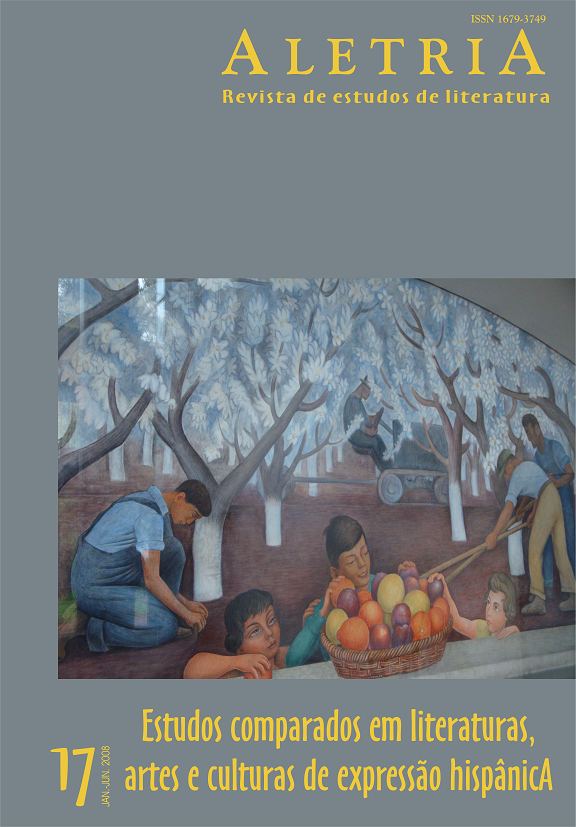Modelos de espacialidade na obra de Rafael Courtoisie
DOI:
https://doi.org/10.17851/2317-2096.17.1.43-50Keywords:
espaço, espacialidade, Rafael Courtoisie, literatura contemporânea, literatura latino-americana, space, spatiality, contemporary literature, Latin American literature.Abstract
Resumo: A obra do escritor uruguaio Rafael Courtoisie é tomada como ponto de partida para uma reflexão sobre alguns modelos por meio dos quais a literatura contemporânea exercita o que se pode designar, genericamente, de “espacialidade”. Esse termo não diz respeito ao modo como o texto literário representa espaços extratextuais. Na verdade, atua na direção contrária, tornando viável que, no âmbito da literatura, se problematize o que é entendido como espaço. Os três modelos de espacialidade que abordamos são: a visão, o tato e o movimento. Da obra de Courtoisie, foram selecionados os seguintes livros: Estado sólido (1996), Umbría (1999) e Música para sordos (2002).
Palavras-chave: espaço; espacialidade; Rafael Courtoisie; literatura contemporânea; literatura latino-americana.
Abstract: The work of the uruguayan writer Rafael Courtoisie is taken as starting point for a reflection on some models by which contemporary literature exercises what we consider to assign, generically, as “spatiality”. This term does not concern to the way that literary text represents extraliterary spaces. Actually, it goes on the contrary direction, making possible that, in the scope of literature, one might deeply question what is understood as space. The three models of spatiality that we approach are: sight, touch and movement. The following books of Courtoisie have been selected: Estado sólido (1996), Umbría (1999) and Música para sordos (2002).
Keywords: space; spatiality; Rafael Courtoisie; contemporary literature; Latin American literature.
Downloads
References
COURTOISIE, Rafael. Estado sólido. Madrid: Visor, 1996.
COURTOISIE, Rafael. Umbría. Caracas: Eclepsidra, 1999.
COURTOISIE, Rafael. Música para sordos. Tuxtla Gutiérrez: Gobierno del Estado de Chiapas, 2002.
Downloads
Published
How to Cite
Issue
Section
License
Copyright (c) 2008 Luis Alberto Brandão Santos (Autor)

This work is licensed under a Creative Commons Attribution 4.0 International License.
Authors who publish with this journal agree to the following terms:Authors retain copyright and grant the journal right of first publication with the work simultaneously licensed under a Creative Commons Attribution Non-Commercial No Derivatives License that allows others to share the work with an acknowledgement of the work's authorship and initial publication in this journal.Authors are able to enter into separate, additional contractual arrangements for the non-exclusive distribution of the journal's published version of the work (e.g., post it to an institutional repository or publish it in a book), with an acknowledgement of its initial publication in this journal.Authors are permitted and encouraged to post their work online (e.g., in institutional repositories or on their website) prior to and during the submission process, as it can lead to productive exchanges, as well as earlier and greater citation of published work (See The Effect of Open Access).





